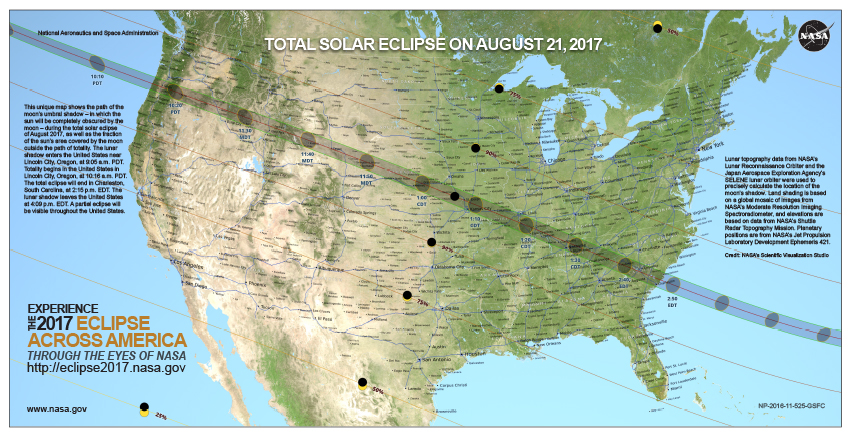 NASA camera captured this total solar eclipse.
NASA camera captured this total solar eclipse.
Six months from Tuesday. a total solar eclipse will cross the nation from coast to coast. The last time that happened was nearly a century ago.
The “Great American Eclipse" is what excited astronomers from Flagstaff’s Lowell Observatory are calling it. They plan a public celebration in Madras, Ore., for viewing come Aug. 21.
“A total solar eclipse is life-changing,” said Kevin Schindler, Lowell Observatory’s public information officer and historian. “We’re going to have a whole football field of activities, from telescopes to students setting up science experiments, and some of those students are coming from right here in Flagstaff.”
 VIEW LARGER The moon’s shadow will cross the United States from Oregon to South Carolina in a 70-mile-wide strip.
VIEW LARGER The moon’s shadow will cross the United States from Oregon to South Carolina in a 70-mile-wide strip.
The moon’s shadow will cross the United States from Oregon to South Carolina in a 70-mile-wide strip. This region is called the “path of totality.”
It’s the only place to see the moon completely block the sun for a few minutes.
Arizona is not in the path of totality. But a partial solar eclipse will be visible. Local celebrations are already planned in Flagstaff, Phoenix, Tucson, and Sierra Vista.


By submitting your comments, you hereby give AZPM the right to post your comments and potentially use them in any other form of media operated by this institution.